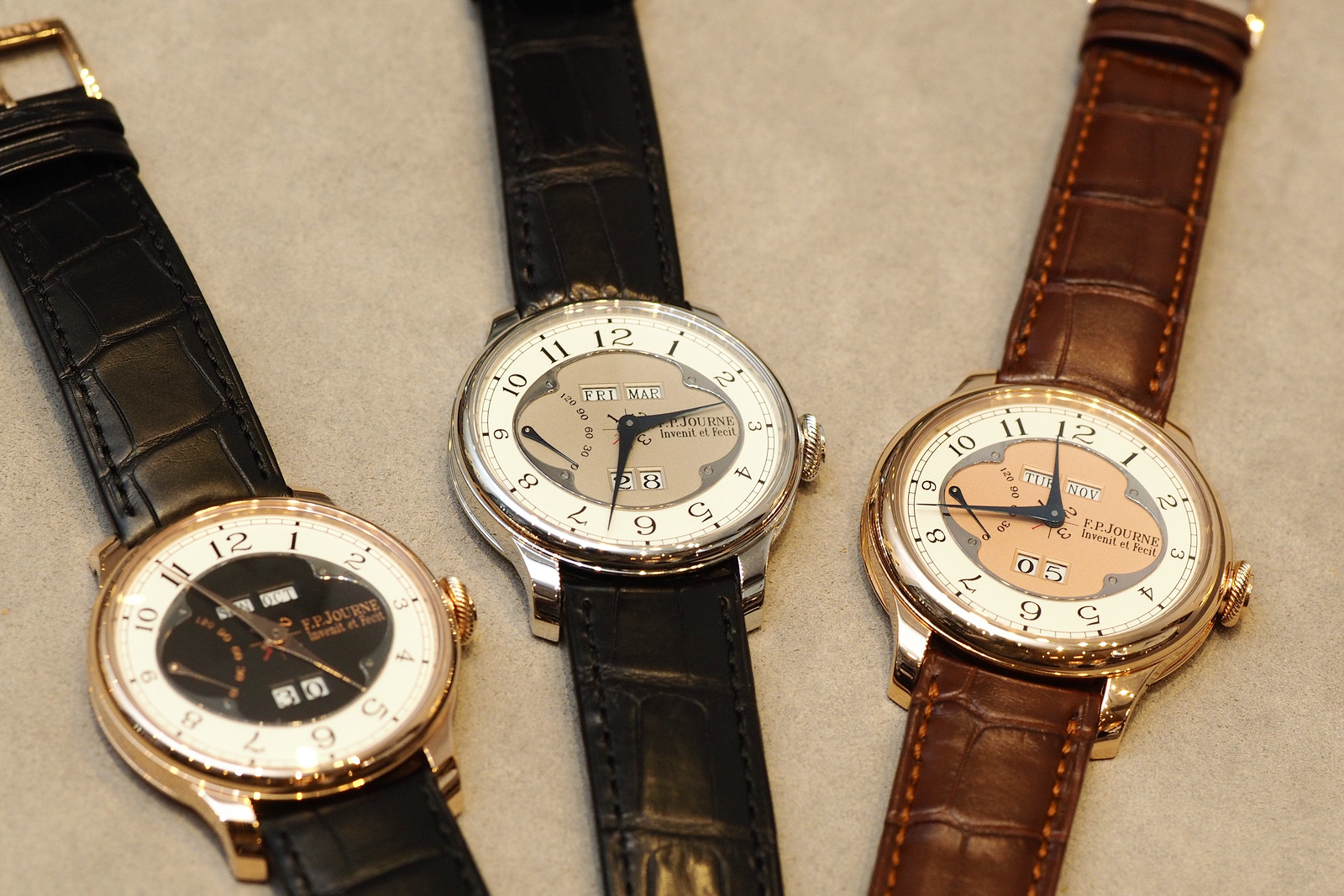In 2013, F.P. Journe introduced the Octa Quantième Perpétuel, replacing the Octa Calendrier – which has an annual calendar complication – effectively making that a collector’s piece. The new design includes a more sophisticated perpetual calendar complication – that adjusts for the difference in the number of days for every month without any need for an adjustment – whereas an annual calendar needs a manual adjustment in February.
Further, the perpetual calendar automatically adjusts every fourth year (leap year), for the extra day in February. This mechanism will maintain mechanical memory until the year 2100.
 The hidden month/leap year corrector retracted from underneath the lug
The hidden month/leap year corrector retracted from underneath the lug
There are a few features worth highlighting that distinguish the Quantième Perpetual from most other perpetual calendars. First, all calendar functions (day, date, month), have an instantaneous jump when the day changes.
Second, simultaneous correction of the date and day can be done via the crown, in one direction, and rotation of the day only in the other direction. Finally, unlike the majority of perpetual calendar wristwatches, there are no recessed push buttons in the caseband, instead, all calendar functions are controlled by the crown or single discreet retractable corrector lever hidden underneath the top left case lug (which controls the month and leap year). This means there is no need to use a corrector tool (or toothpick) to adjust the calendar displays.
Functionally, this perpetual calendar wristwatch has intentionally been designed to be simple to operate. Visually, the dial has also been designed with simplicity in mind. A silvery-white chapter ring displays black printed Arabic numerals marking the hours, and a railroad track outer ring, also printed in black, for minutes. Blued hour and minute hands, in the signature Journe style, indicate the time. Inside of the chapter ring is a steel mounting, fixed to the center of the dial by four screws. Each dial is manufactured in red or white gold, with a beautiful frosted red, gray or black surface.
The day has its own rectangular-shaped aperture at 12 o’clock, the displays the abbreviation for the day. Adjacent to this is an aperture with the month abbreviation. At 6 o’clock is the date, distinguished by dual square-shaped apertures. A small arrow-shaped hand in the center of the dial, in conjunction with the crosshair 1,2,3,4 display, indicate whether it is a leap year or not. The impressive 120-hour power reserve is indicated at 9 o’clock.
Presented in either a 40 mm or 42 mm, fully polished platinum or red gold case, and measuring 10.8 mm thick, with short articulated lugs, the watch wears very comfortably, despite the weight of all the heavy precious metal used for the case and movement. The flat solid gold or platinum crown, which has enough diameter to grip, does not protrude very much, further enhancing the on wrist comfort.
Driving the time and calendar functions – and visible through the sapphire caseback – is automatic caliber FPJ 1300-3, with 18K gold mainplate and bridges, like all Journe watches. The finishing is, of course, incredible, with circular graining on the mainplate, circular Côtes de Genève on the bridges, polished screw heads with chamfered slots, pegs with polished rounded ends, and steel components that have been hand chamfered and polished. The movement oscillates at a frequency of 3Hz (21,600 kph), measures 33 mm x 5.20 mm, has 374 components (including 37 jewels) and features a 22K rose gold guilloché rotor with uni-directional winding.
The F.P. Journe Octa Quantième Perpetual collection is limited in production to 900 pieces per year, and the retail prices are as follows: $73,400 for the 42 mm and $71,700 for the 40 mm in platinum; and $69,500 for the 42 mm and $67,800 for the 40 mm in red gold.
Editor’s note: The Quantième Perpétuel was unveiled in 2013 but due to delays in finalizing the new caliber deliveries did not start until 2015.






















